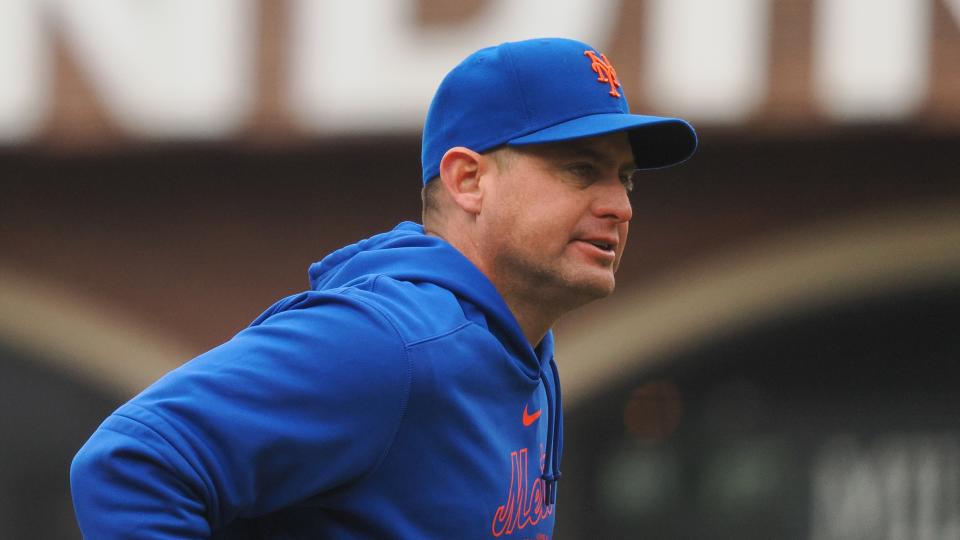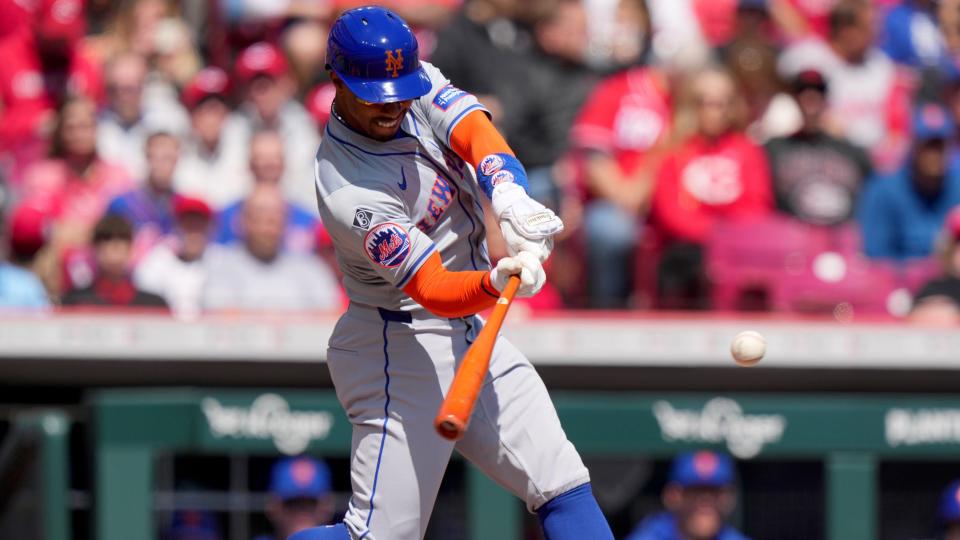8 reasons to be optimistic and pessimistic about Mets' start to 2024 season
Thirty games in the books, as the calendar has turned to May, and the Mets are 15-15, which begs the question: Is that good or bad?
Considering the relatively low expectations heading into this season, as well as the injury to ace Kodai Senga, and the 0-5 start, I’d lean more toward good than bad, to be sure.
Still, a .500 record won’t be good enough to earn a postseason berth, even with three wild-card spots available, so the Mets will have to raise their level over the course of the next 132 games in order to play October baseball.
Will they do it?
There are some promising signs but significant flaws as well. In a general sense, the pitching has been better than expected, the offense worse. All in all, I think they’ll play at least somewhat better the rest of the way and be in the race for a wild card spot.
To help you judge for yourself I go into more detail here with my Top 5 Reasons For Optimism and as well as my Top 3 Reasons For Concern.
REASONS FOR OPTIMISM
1. THE BULLPEN
Easily the most pleasant surprise of the season for the Mets, the bullpen has been deep and dominant, a combination that can carry a team with decent starting pitching a long way.
Most notably the Mets’ pen, as of Thursday, leads the majors in strikeouts, with 148 in 113.2 innings, and lowest opponent batting average, holding hitters to a .186 average.
Edwin Diaz’s velocity has been down a tick at times but he has mostly been back to his 2022 form, notwithstanding that ninth-inning home run by Christopher Morel on Monday night.
The stunner has been Reed Garrett and his 0.57 ERA and 28 K’s in 15.2 innings after being claimed on waivers last season, but the Mets are getting important contributions from as many as eight different relievers.
2. LUIS SEVERINO
So far the Severino contract, a one-year, $13 million deal, is in the running for best signing of the offseason as the right-hander is pitching with dominance reminiscent of his early years with the Yankees.
He’s more of a complete pitcher now, admittedly no longer trying to strike everybody out, but mixing a sinker and cutter that have produced weak contact to go with a still formidable fastball in the 97-98 mph range.
Since a shaky first start of the season, Severino has pitched to a 1.80 ERA over his last five starts, allowing only 15 hits in 30 innings.

3. THE MANAGER
Carlos Mendoza has made a strong early impression as a rookie manager, showing a strong feel for the game and a candor in dealing with the media that projects a sense of security about doing the job in New York.
He received a lot of attention for leaving Jose Quintana in to finish the eighth inning last Sunday, trusting what he was seeing out of his pitcher over a more preferable matchup, and rightly so because it indicated an ability to manage with his eyes and not just by the analytics, as has become the norm these days.
It’s a trait that could be galvanizing for a team that lacked leadership last year.
4. STARLING MARTE
The Mets’ offense has been a disappointment and but Marte’s return to form after his injury-marred 2023 season offers hope for better days ahead.
His overall numbers aren’t eye-popping but for the last few weeks (before his bereavement leave) he has been hitting everything hard, with six multi-hit games over a 12-game period. Most notably his hard-hit percentage of 46.5 this season is by far the highest of his career, and ranking in the top 20 percent of MLB.
Having Marte back in the No. 2 spot and making that type of contact offers the Mets reason to believe they can do more with the bats.
5. BACK FROM THE IL
Senga’s return, perhaps by early June, should have the most impact. If he returns to his 2023 form and takes his place as the Mets’ No. 1 starter, it would be a huge upgrade for a rotation that has been solid but hasn’t provided much length.
Senga has begun throwing live to hitters and the Mets seem very encouraged by his progress. If he does return the likely candidate to be bumped, at least right now, is Adrian Houser.
Also, there is the potential impact of Francisco Alvarez, currently sidelined after surgery for a torn thumb ligament. The 22-year old catcher wasn’t off to a great start before the injury, with one home run in 16 games, but as he showed last year with 25 home runs in his rookie season, his power can be a dangerous weapon.

REASONS FOR CONCERN
1. NOT ENOUGH IMPACT HITTERS
Maybe this will change when J.D. Martinez gets rolling and Alvarez eventually flexes his home run muscles, but for now it feels as if this offense needs another difference-maker to deliver some much-needed consistency in scoring runs.
In that respect it’s hard not to single out Francisco Lindor, in particular because of his struggles against right-handed pitching. The switch-hitter is hitting only .179 as a lefty, .197 overall, and as the No. 2 or 3 hitter in the lineup that contributes heavily to the offense’s inconsistency.
And so far both Lindor and Pete Alonso have been dreadful in the clutch: Lindor is hitting .107 with runners in scoring position, Alonso .136. Both likely will put up their usual numbers for the season, but sometimes it matters when and how consistently you do it, as was the case last year when they did a lot of their damage after the Mets’ season fell apart.
The Mets also need more from Brandon Nimmo, Jeff McNeil and even Brett Baty, as the offense has sputtered lately, scoring two runs or fewer in six of their last seven losses during their current 3-7 tailspin.
2. CAN’T STOP THE STEAL
The numbers are ugly: the Mets are 1-for-37 in throwing out base-stealers this season, the worst such percentage in the majors, and their inability to stop the running game tends to put them at a major disadvantage in close games.
It’s not all on the catchers, as several of the Mets’ pitchers have slow deliveries to the plate, but certainly some of the responsibility falls on Alvarez, Omar Narvaez, and Tomas Nido.
Alvarez has a strong arm and decent delivery times but he was 0-for-10 before going to the IL. Narvaez is a weak defender with a slow delivery and 0-for-21 so far. Nido became the first Mets’ catcher to throw out a runner when he came up to replace Alvarez, and he’s a solid catch-and-throw guy but has only that one caught-stealing.
3. ALL THOSE WALKS
From early on the one major flaw among Mets’ starting pitchers has been their high walk total. At first it seemed fluky but it has continued to be a problem, as the Mets starters have the most walks in the majors with 79 in their 30 starts.
The walks have really hurt Houser, the only major disappointment in the rotation, as 16 walks in 23.2 innings have been a major factor in his 8.37 ERA.
But the control problems have been costly at times to all of the starters, with the exception of Severino. And even when pitchers have worked their way out of trouble, the walks have kept them from going deep into games, putting a heavy workload on the bullpen.
So far the pen has been deep enough to handle it but eventually a lack of length takes a toll.

